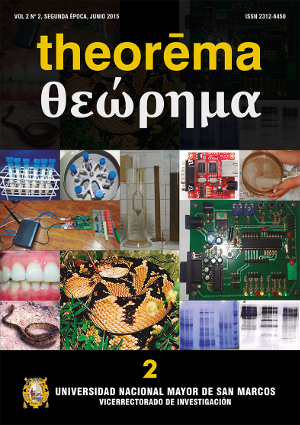Study of wastewater of Lima Peru region by physical techniques
Keywords:
Sediments, Medicinal mineral effluents, Energy dispersive X-ray fluorescence, X-ray diffractometry, Mössbauer spectroscopy.Abstract
The elemental, structural and mineralogical characterization, as well as their physico-chemical properties of the clay and magnetic fractions of three medicinal mineral effluents collected in situ designated “La Milagrosa” (MML), “La Mellicera” (MELL), and “La Encantada” (MEC), are determined. These effluents are located in the District of Chilca, Cañete Province, south of Lima-Peru, and their morphology has been altered during the last five years after we carried out a previous study1, 2. The physical analytical techniques used were: energy dispersive X-ray fluorescence (EDXRF), X-ray diffractometry (XRD) and transmission Mössbauer spectroscopy (TMS) at room and liquid helium temperature, and at low and high velocities. The results show that dolomite is the main clay phase present with structural sites occupied by Fe+2 and Fe+3 cations; the mineralogy of the magnetic fraction shows the presence of hematite and magnetite.Downloads
Published
Issue
Section
License
Copyright (c) 2016 María Luisa Cerón L., Jorge A. Bravo C., Franko Urcia Ch.

This work is licensed under a Creative Commons Attribution-NonCommercial-ShareAlike 4.0 International License.

Theorema segunda época by Vicerrectorado de Investigación y Posgrado is licensed under a Creative Commons Reconocimiento-NoComercial-CompartirIgual 4.0 Internacional License.
Creado a partir de la obra en http://revistasinvestigacion.unmsm.edu.pe/index.php/Theo/index.
AUTHORS RETAIN THEIR RIGHTS:
a. Authors retain their trade mark rights and patent, and also on any process or procedure described in the article.
b. Authors retain their right to share, copy, distribute, perform and publicly communicate their article (eg, to place their article in an institutional repository or publish it in a book), with an acknowledgment of its initial publication in the Theorema segunda época.
c. Authors retain theirs right to make a subsequent publication of their work, to use the article or any part thereof (eg a compilation of his papers, lecture notes, thesis, or a book), always indicating the source of publication (the originator of the work, journal, volume, number and date).



